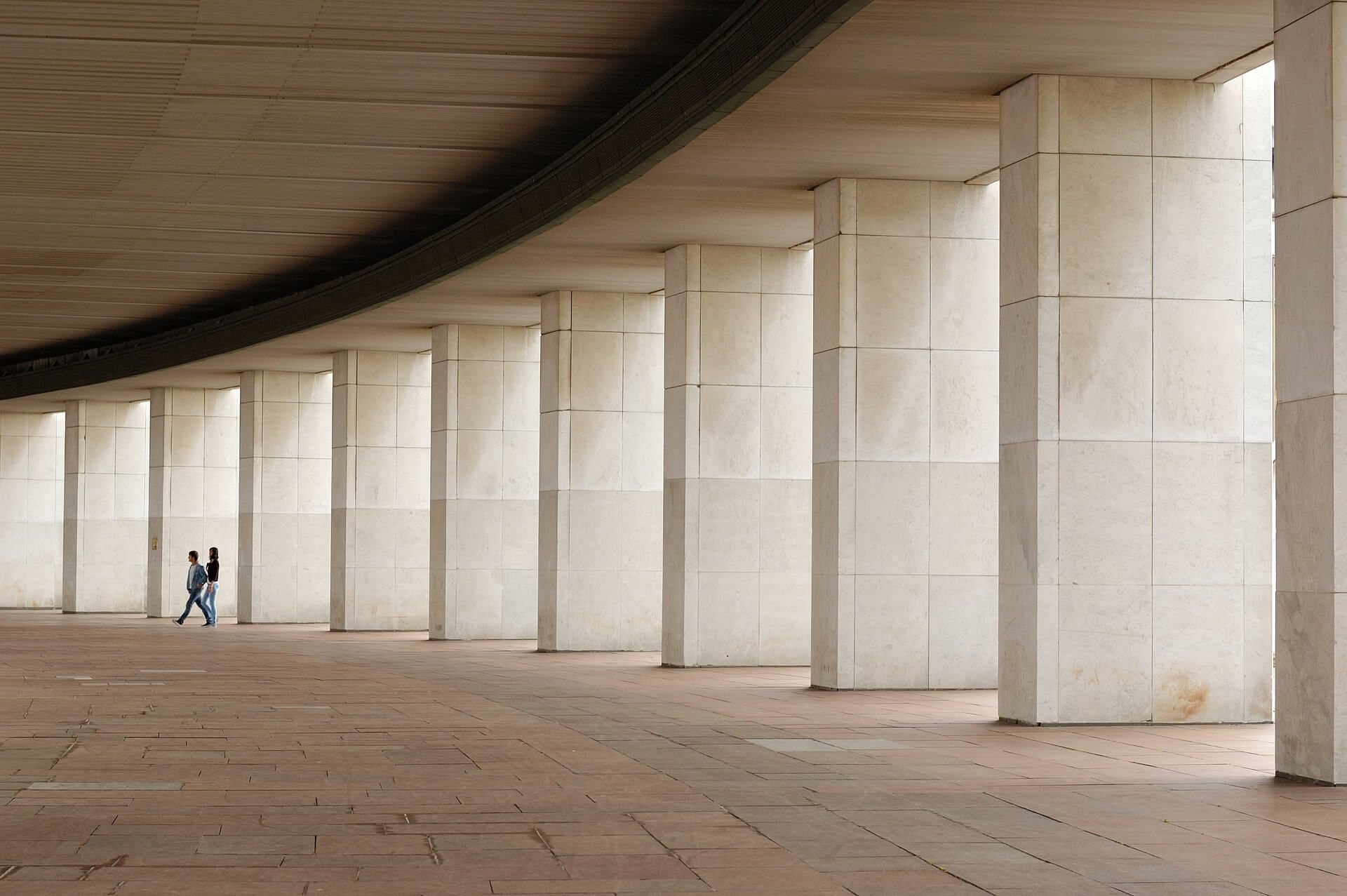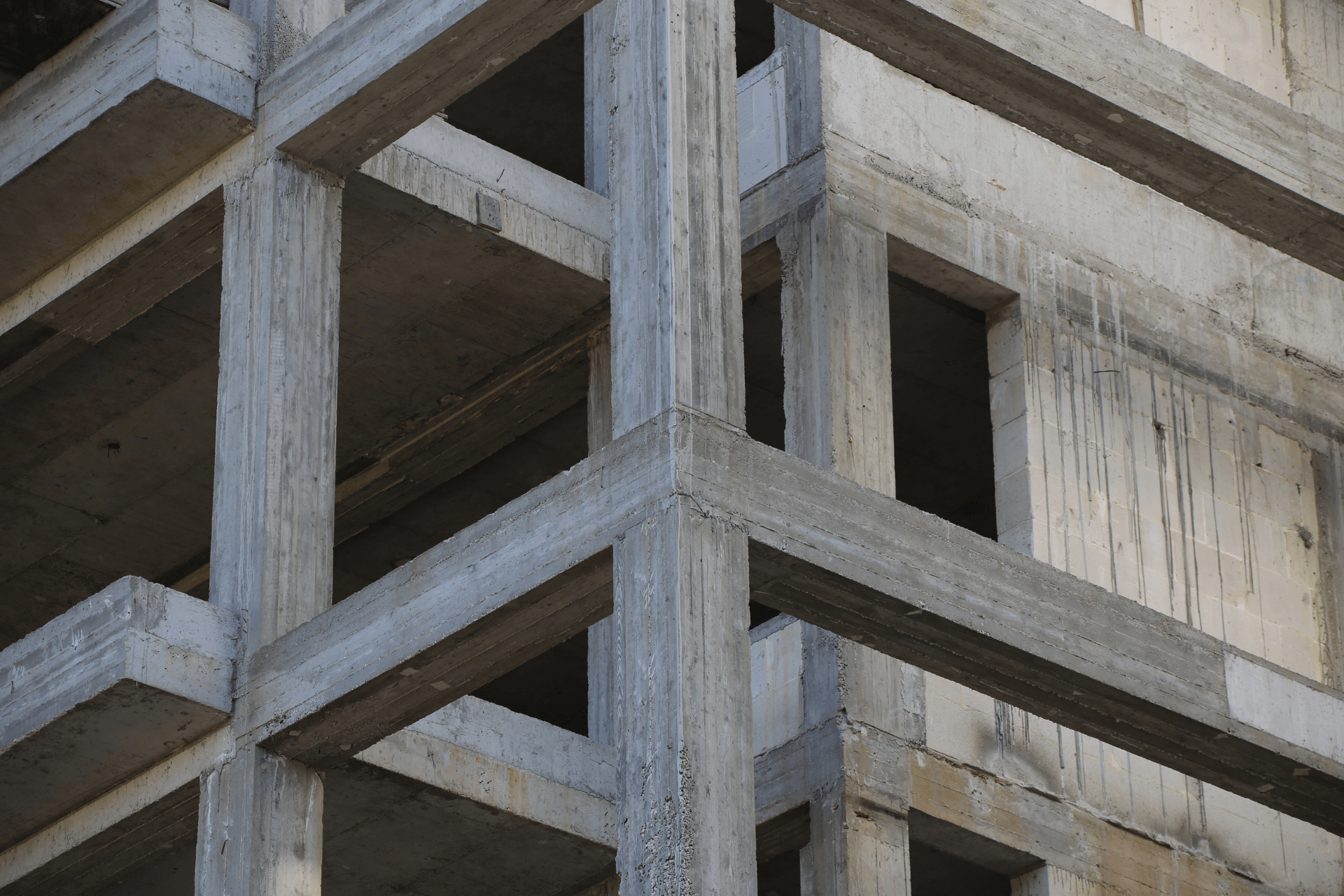CONCRETE BEAMS & SUPPORT PILLARS
Precast concrete pillars are easier to use, but if you want them to meet the specifications precisely, then casting the pillars is recommended. Concrete beams are used to carry horizontal and vertical loads.
Our concrete professionals are well-versed and are experienced when it comes to beams and columns.
Concrete Pillars
How We Cast Our Concrete Pillar?
To cast the pillars, several steps need to be taken. First, the fitting of columns needs to be poured. There should be metal bars that extend out to be used to reinforce the pillar. The formwork needs to be built, which is a wooden structure that will form the shape of the pillar.
It also keeps the pillar in place while it is hardening. The concrete should be mixed with attention being paid to the ratio of the mixture as it determines the strength of the pillar. Then the concrete is poured into the formwork.
After the concrete has hardened, the formwork can be removed. It can take several days to completely harden. The last step is to cure the pillar, and it is ready for use.
Functions Of Our Concrete Pillar
A concrete pillar has several functions. It can be used for part of a structure but also for decorative purposes. It can be a great addition indoors or outdoors.
A pillar can serve as a centerpiece in your home or be used as support for a veranda or pergola. It can be used as a room divider by marking the division between two rooms. For patios and verandas, pillars are needed to uphold the roof that protects the space.
A pillar with different design details can create an eye-catching design. Another popular option for concrete pillars is for a decorative piece at the entrance of a home. Adding two pillars can create an elegant look that differs your home from others in the neighborhood.
Advantages Of Concrete Pillars
- High comprehensive strength
- Withstands good amount of tensile stress
- Adequately weather and fire-resistant
- Durable
- Has limitless molding capacity
- Low maintenance
- Cost-effective
- Rigid with minimum deflection
- Less labor
Disadvantages Of Concrete Pillars
- Less comprehensive strength (1/10th of tensile strength)
- Mixing, casting, and curing effects final durability
- Shrinkage leads to strength loss by crack development
Concrete Beams
Uses Of Our Concrete Beams
Steel bars, places, or fibers can be used to reinforce the strength of the beams and create resistance to bending. Reinforcement is needed; otherwise, the beam would easily break under pressure. Concrete also provides protection to the steel reinforcement.
Reinforcement of concrete beams creates structural members that help support the sloping load at its end. Our concrete beams are used in both vertical and horizontal structures. Moreover, the strength of the concrete beams structures ensures a load-bearing feature to the structural unit.
The intricately made concrete beams by our expert group of concrete contractors are used in floors, walls, cladding, and more. These are used to support the building.
Preventing Rusting In Concrete Beams
The weather can cause the steel to rust. Rusting may crack the concrete and weaken the beam construction. It is crucial to make the right calculations of how much weight a concrete beam can carry as well as factor in other elements that could affect safety.
Types Of Concrete Beams
The different types of concrete beams are classified as simple, continuous, semi-continuous, cantilever, and T-beam. A simple beam is a beam that has a single span supported without restraint. A continuous beam has more than two supports.
A semi-continuous is a beam with two spans with or without restraints at the ends. Cantilever beams are supported at one end. Lastly, t-beams are made when floor slabs and beams are poured at the same time, creating a T shape.
Simple Concrete Beam
It is the type of concrete beam that has a single span. Our simple concrete beams are easily supported at the end without any restraint at the support. Moreover, it will create a rigid connection with its help.
Continuous Beam
Our continuous concrete beam rests on more than two supports. However, it can be provided for a long site between walls. This beam has intermediate support of smaller beams.
Semi-Continuous Beam
Our semi-continuous beam has two spans that are either with or without restraint at two extreme ends.
Cantilever Beam
The cantilever beams provided by us have supported on both ends of the project beyond the support.
T-Beam
The T-beam is used when floor slabs are poured simultaneously with beams. Further, it produces a monolithic structure. Our T-beam has portions of the slab at both sides serving as flanges.
The beam underneath the slab is a web member called a stem.
Advantages Of Concrete Columns Beams
- Easy framework
- Strong in compression
- Withstands huge amount of load
- Lower depth Allows services under the floor
- Longevity
- Minimum structural depth
- Flying forms usage
- Good solutions
Disadvantages Of Concrete Beam
- Lack of tensile strength
- Cracks develop easily
Why Is Concrete Reinforcement Required?
We use concrete reinforcement to improve the strength and durability of the material. Usually, we use deformed steel to create a composite material. Commonly known as rebar.
Steel behaves similarly to concrete. However, it has higher tension and sheerer strength to the floor. It allows our concrete to withstand comprehensive stress. Our concrete contractors use this method to increase tensile strength.
It helps our concrete to bear heavy loads on the floor for an extended period without cracking. Moreover, reinforced concrete can shrink and expand with the environment.
A rebar is a common form of concrete reinforcement that we use in our materials. Rebar is a versatile material that can be bent or assembled that perfectly supports the shape of any structure made of concrete. On the other hand, carbon steel is the most commonly used rebar material.
We use these products to provide the best quality concrete to our clients. Here at Nashville Concrete Experts, we pride ourselves on delivering high-quality, durable, and flexible concrete.
We use industry-grade tools like mixers, wheelbarrows, shovels, screeds, vibrators, vapor retarders, etc. It ensures that we have constructed what our clients need with excellent service in a comprehensive manner.
Request a Quote
Request a quote
Santa Clarity Concrete Expert Leads
We will get back to you as soon as possible.
Please try again later.
Concrete beams are used to carry horizontal and vertical loads. Steel bars, places, or fibers can be used to reinforce the strength of the beams and create resistance to bending. Reinforcement is needed, otherwise, the beam would easily break under pressure. Concrete also provides protection to the steel reinforcement. The weather can cause the steel to rusting. Rusting may crack the concrete and weaken the beam construction. It is crucial to make the right calculations of how much weight a concrete beam can carry as well as factor in other elements that could affect safety.
The different types of concrete beams are classified as simple, continuous, semi-continuous, cantilever, and T-beam. A simple beam is a beam that has a single span supported without restraint. A continuous beam has more than two supports. A semi-continuous is a beam with two spans with or without restraints at the ends. Cantilever beams are supported at one end. Lastly, t-beams are made when floor slabs and beams are poured at the same time, creating a T shape.
Give us a call today!
Let us create the project you've envisioned
Proudly Serving Areas Around Nashville, TN with Offices in Several Locations
Nashville, TN
Brentwood, TN
Goodlettsville, TN
Hendersonville, TN
Mount Juliet, TN
Le Vergne, TN
Franklin, TN
Smyrna, TN
Gallatin, TN
Springfield, TN
Springfield, TN
Lebanon, TN
Spring Hill, TN
Murfreesboro, TN
Portland, TN
Copyright Nashville Concrete Experts (Owned & Operated by Precision Concrete) All work will proudly be done by licensed and experienced contractors


